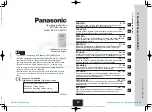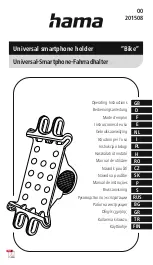
Manual, F/T Sensor, Ethernet Axia
Document #9620-05-C-Ethernet Axia-02
Pinnacle Park • 1031 Goodworth Drive • Apex, NC 27539 • Tel:+1 919.772.0115 • Fax:+1 919.772.8259 •
C-91
Symptom: The sensor
does not report
accurate F/T data.
Cause:
The sensor may have been overloaded beyond its calibration
limits. For calibration limits, refer to the applicable ATI manual
Solution:
Check the status code. Error bits related to overload are:
2, 27, and 30. See solution for
Cause:
The sensor system configuration is not set up correctly in a
user’s software.
Solution:
Verify the system is properly configured; refer to
or contact ATI for assistance.
Cause:
The user enabled tool transformation functionality.
A tool transformation moves the origin and coordinates of the
sensor data. If the tool transformation is incorrectly applied, the F/T
data is skewed.
Solution:
Check if a tool transformation is applied, and adjust it
if needed. If all fields are 0, tool transformation is not
applied; for tool transfer commands, refer to:
•
ATI webpage:
Section 6.6—F/T Configurations
•
Console via Telnet:
Section 8.3—Console “CAL” | “SET”
•
•
Section 10.6—Write Tool Transform Command
•
XML:
Section 11.1—System and Configuration Information
For more information on the concept of tool
transformation, refer to the applicable ATI
manual in
Cause:
The sensor is not properly installed, for example: improper fasteners
are used, or the sensor is not mounted to a flat, stiff surface.
Solution:
Verify the sensor is correctly installed; refer to the
Installation
and
Troubleshooting
Sections
in the
appropriate ATI F/T sensor manual listed in
.
Cause:
It is normal to see an offset in the data, even when unloaded.
Solution:
Use the bias command to zero/tare the data.
Cause:
Mechanical coupling — an external object such as customer tooling
or utilities is contacting a sensor’s surface between the mounting
side and tool side.
Solution:
Remove any debris between the tool side and interface
plate. Use proper cable management for cables and hoses;
do not connect them tightly between the mounting and
tool side of the sensor.
Anything that contacts surfaces such as the through
hole in the sensor or cover plates on either side of the
sensor induces loading or movement that could result in
inaccurate F/T data.






































